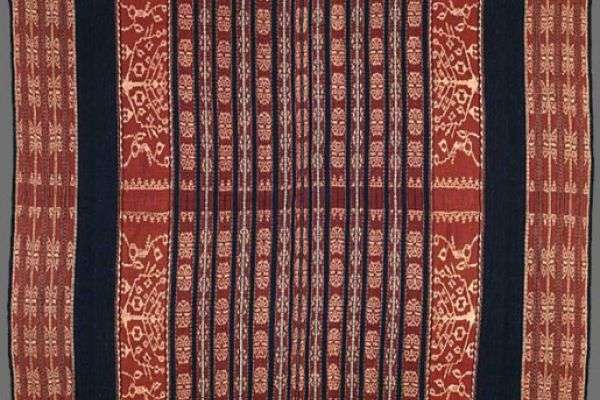
- This event has passed.

Image c. Indonesia Travel Magazine
Textiles of the Nusa Tenggara – An illustrated talk and Shared Passions session facilitated by Dr Marianne Hulsbosch.
The Nusa Tenggara islands have cultural textile traditions that are truly unique. From the textiles of Lombok to the west to those of Timor to the east, each is steeped in rich cultural lore, history and local tradition. Join Marianne as she explores the textiles of Savu. Then we invite you to share your Nusa Tenggara fabrics with other Textiles Study Group members. Rummage through your own collection and bring in your favourite piece. We would all love to see it and explore its symbolism and imagery. Please find below an indicative guide that could assist in describing your piece.
Marianne Hulsbosch has long been involved with the TAASA Textile Study Group and is a keen textile artist, collector and passionate author of:Pointy Shoes and Pith Helmets (2014), Leiden: Brill; Rites of Passage and Rituals in Indonesia; Cross-Dressing in Indonesia; and Colonial Influence on the Sarong and Kain in Java In J. B. Eicher (Ed.), The Berg Encyclopaedia of World Dress and Fashion. (2010) (Vol. 4, pp. 1194–1262), Oxford: Berg Fashion Library Ltd. and Asian Material Culture. (Vol. 2) (2009), Amsterdam: Amsterdam University Press. Lecturing at the University of Sydney, her research interests focus on the cross-cultural influences on traditional textile designs in mainland and insular Southeast Asia regions. She is particularly interested in the impact of Western modernity on textile patterns and sartorial items appearing at the turn of the twentieth century in that region.
Willing to share? Please confirm with Marianne Hulsbosch on: marianne@hulsbosch.com.au. Here are some Guidelines for presenting a Textile – Timeframe 3 to 5 minutes
What is the textile?
Where is it from?
What material is it made from?
How old is it if known?
What is its function?
What techniques have been employed? This could include such aspects as weaving techniques, embroidery, appliqué, patchwork, etc.
What is the cultural context of the piece?
What can the symbols, images and/or patterns tell us about the culture/society in which it was produced?
Payment: Pay at the door.